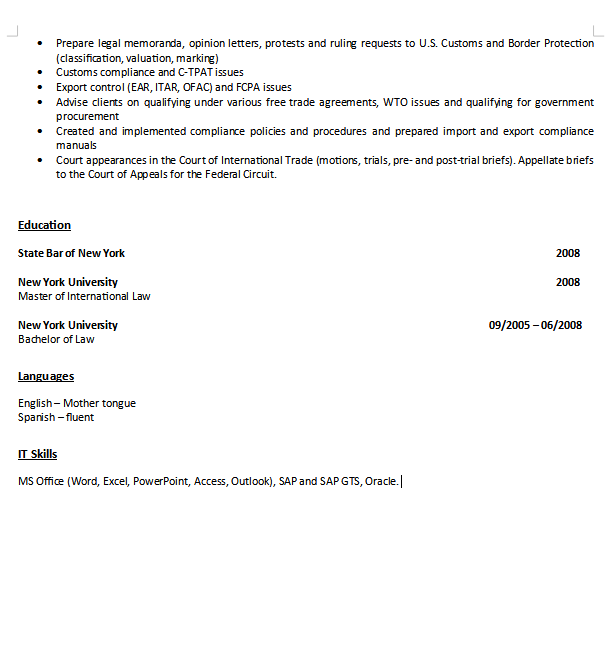CV Template and Preparation Guide
 Putting a CV together can be quite daunting. It can sometimes be the only thing standing between you and a new job. Below are some guidelines and pointers. And we’ve also included a template to get you started.
Putting a CV together can be quite daunting. It can sometimes be the only thing standing between you and a new job. Below are some guidelines and pointers. And we’ve also included a template to get you started.
1. A common myth – A CV can only be two pages long. It’s true that no one wants to read a 10 page biography, however expanding a CV to 3 or even 4 pages is not a bad thing. Just make sure you keep it clear, concise and relevant.
2. Photo – This really is completely up to you, and there is no right or wrong. What we would say is, it’s common place in most of mainland Europe and Asia to include a professional photo of yourself at the top of the CV. However, this is much less commonplace in the US and UK.
3. Personal details - In many countries, including the US, UK and various European countries, it's common practice not to include personal information such as age, marital status, or gender on your CV. Employers should evaluate candidates based on their qualifications, skills, experiences, and suitability for the job, rather than demographic factors like age. Therefore, it's generally not necessary or advisable to include your age on your CV.
4. Use a simple font - It can be tempting to include vibrant colors and fancy fonts, but we recommend you don’t. Hiring managers want a clear, factual and easy to follow document.
5. Intro - Before describing specific jobs, we recommend, at the top of the CV, a short summary of your career.
6. How to present job history - It is important to write your jobs in chronological order, with your most recent experience at the start.
7. How and what to highlight - Detail your work history by starting with the company name, title, main location and correct dates of employment. Under this, add a short summary/overview, followed by bullet points of your responsibilities and achievements. Include day to day responsibilities, projects, overview of countries/regions you cover, and reporting lines.
8. Promotions - Highlight any progression or promotions in each of your roles with the correct dates and include bullet points with each position.
9. Gaps – It’s no longer a negative to take some time off. However, if there is a gap between jobs, a short sentence explaining the reason, including dates, will be avoid any questions.
10. Education -Include the school, college, or university name, the dates you attended, and the qualification. In this category, it is good to also write any additional training. For example, Licensed Customs Broker, additional customs training, export controls training, SAP GTS training etc.
11. What else do you bring to the table - Companies like to see other skills, for example, additional languages, software knowledge, publications, awards, and affiliations. By adding this onto your CV you are showing the employer the breadth of your skillset.
12. Tailor to each job – Once you have a base CV, it is important to tweak and tailor this to the specific role you are applying for. You want to make sure you are adding the relevant accomplishments and experience to the particular job description.
--> See How to prepare for an interview.
Featured Jobs
- Trade Compliance Analyst Morrisville 02/05/2024
- Trade Compliance Specialist Buffalo 02/05/2024
- Fachkraft Zoll & Außenwirtschaft in Voll- oder Teilzeit (m/w/d) Übersee 02/05/2024
- Customs Brokerage Specialist, GM Field - David Cardadeiro Virtual Location - Tennessee 02/05/2024
- Trade Compliance Analyst Morrisville 02/05/2024

